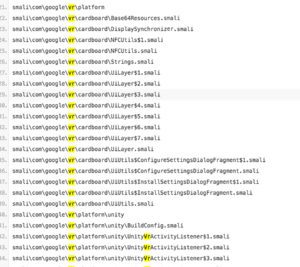POKEMON GO + GOOGLE CARDBOARD SUPPORT

Pokemon Go is definitely the hit of the summer 2016. No day passes by that you do not see people on the street running around stating at their phone. No double this hype puts augmented reality into everybody mind. But do virtual reality also profit from this hype?
Rumor is going around that Niantic will implement Virtual Reality / Google Cardboard support to their Pokemon Go App. You can have a look at it for yourself. Open your Pokemon Go App. Tap on the Pokeball, then Settings -> About Pokemon Go -> Licenses and there you have it "Google Cardboard".
Fans have uncovered an intriguing mention of Google’s first DIY headset, Google Cardboard, within the app itself. Under settings you can find a Licenses sub-menu that lists all the software that developer Niantic used when working with Pokemon Go. At the top of the list is the clear statement: “The following Open Source Software and 3rd Party Libraries went in to the making of Pokemon Go.
Now that’s a surprise; could we see support for the low-end headset in the app? Why else would Ninantic work with it? Currently, Pokemon Go asks players to venture outside to locate virtual critters hidden in the real world. Once found, Pokemon appear within the world using the player’s camera, and are then caught by flicking a Pokeball at them.
Many mobile-based VR headsets, including Google Cardboard, offer a space for your phone’s camera to still access the outside world, so you could still use this feature with a headset on. In VR, though, you could view a true 3D representation of your Pokemon and feel like they were really next to you. It’s a dream that many fans of the franchise – including Oculus Rift creator Palmer Luckey – have wanted to realize for years.
GET READY FOR VR POKEMON GO AND GET YOUR GOOGLE CARDBOARD HERE
 Inside the expanded (decompiled) code of the Beta version of Pokemon GO, the following lines of code can be found. They are not yet active in the Beta, just sitting around minding their own business, waiting to be kicked around. We expect we'll learn more about these bits at Google I/O.
Inside the expanded (decompiled) code of the Beta version of Pokemon GO, the following lines of code can be found. They are not yet active in the Beta, just sitting around minding their own business, waiting to be kicked around. We expect we'll learn more about these bits at Google I/O.Then again, if the developer has already worked with Google Cardboard, why isn’t support already included in the app? Perhaps it still has improvements to be made. Our preferred theory, though, is that the developer could possibly be holding off to instead support the upcoming Google Daydream platform. That’s a mobile VR ecosystem of headsets and motion controllers supported by a number of upcoming smartphones. Though still powered by smartphones, it represents a much higher-end experience than Cardboard, so we’d definitely prefer to see it there.
Either that, or this was a simple experiment and doesn’t mean anything at all. Let’s hope that’s not the case. Still, we might get to see it on Microsoft’s HoloLens at some point.